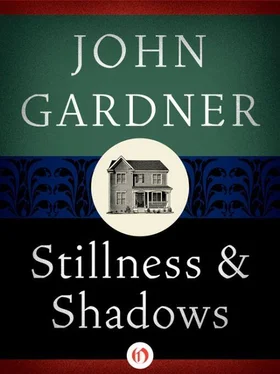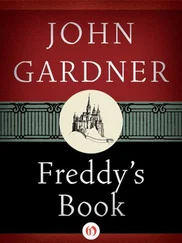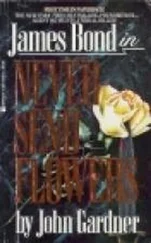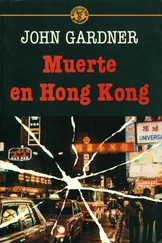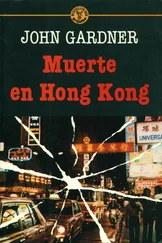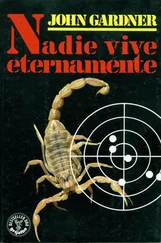His mother said, with conviction, “Isn’t she.”
“Looks like Sonja Henie,” John Elmer said.
“Oh, John,” Aunt Cora said.
And then, with mild horror, Buddy realized that he himself was in this movie. His parents’ car was parked beside the curb, and they were all getting out. He remembered before his picture appeared on the screen that as they walked toward the house Joan’s father was running the movie camera, and he remembered that as he passed he, Buddy, had made a face. Only now did he realize the implications, and the skin of his face began to sting. His mother and father went past the camera — Joan’s father had made them come one by one — and then Gilbert came by, smiling shyly — he had dark, slightly curly hair and eyes like his father’s, a little mysterious, as though, perhaps, he’d been a child once before and had not been happy, though he was happy now. He seemed wiser, gentler than the rest of his family — or was that, perhaps, a trick of Martin Orrick’s memory, thinking back to that image on the screen long afterward? His brother Gilbert moved out of the picture and he saw himself coming, with none of his brother’s confidence, though he was older, and he knew the stupid, obscene face must come, and waited, sick at heart, and it came — he stuck his tongue out, put his thumbs into his ears — and was gone almost instantly ( Life is fleeting , Martin Orrick would write, long afterward, even the worst of life is fleeting ), and everyone laughed. The screen was darkened by an image of Grandma Davis in a black dress. She seemed in the picture unnaturally large, somehow frightening. She moved very slowly on her heavy cane, smiling in a way that seemed not at all like her, and Joan, in the darkness beside him, laughed. As if the laugh had been a signal, her brother James, in the darkness just beyond her, said, “Here comes the Queen,” and their father turned and gave him a quick look. Immediately, as if miraculously, the image was replaced by one of Joan in a white tennis outfit, white shirt, white shorts.
“That’s a mighty pretty girl,” Buddy’s father said.
Her red hair swirled around her shoulders like fire, like copper, like a flying mane.
He glanced at his brother beside him, who caught the glance and grinned.
She was moving toward the camera. Perhaps her father, holding the camera, said something funny. She smiled.
John Elmer said, trying to be funny, “Here comes the Queen!”
They politely laughed.
The image went lighter, and still lighter, then froze, and suddenly she vanished like a ghost.
“Lights!” Joan’s father said.
Her mother reached up to the wall switch and turned on the lights.
It would be a strange thing, she often thought, to have second sight, as her Grandma Frazier was supposed to have had, and Martin’s uncle George. It occurred to her, for instance, one day when she was forty, when Martin stopped the car to wait for a light at the corner of Olive Street and Grand, in St. Louis. What would she have thought — sometime in the late 1940s, standing on this corner, on her way to her part-time accompanist’s job at the Duggers School of the Dance — if she had suddenly had a vision of what downtown St. Louis would be like just twenty-five years later? What would she have thought — what would she have felt — standing on that crowded, noisy corner — if the crowd had suddenly thinned to just three or four hurrying figures and the buildings had gone solemn, like prison or mausoleum walls? She imagined the vision coming as pure image, like a photograph or drab documentary film, with no hint of explanation — saw herself, in her 1940s schoolgirl’s clothes, pleated skirt and short-sleeved sweater, a dark green coat and simple, light green head-scarf, bobbysox and loafers, her hair in a permanent, shiny and curly and a trifle stiff, books in her arm — since she came in directly from school on the bus, or on a chain of buses that shuttled her from Ferguson to Normandy to Wellston to downtown. There had been — was it on this corner? — a wonderful ice-cream place, the Park Plaza, where for a dollar you could get a parfait two feet high, and all around this section there were magnificent theaters, as colorful as circuses, with high, bold marquees on which yellow, red, blue, green, purple, and white lights (lightbulbs, she remembered, and even then some that had burned out weren’t replaced) went racing around titles four feet high — Rope, The Return of Frank James —and inside, the theaters were like palaces: great gilded lions; red-velvet-covered, three-inch-thick ropes on golden posts; majestic, wide stairways that made everyone an instant king or queen; ushers in uniforms from the days of the Empire (God knew which empire); and in the great, domed theater itself a hush that was patently religious, the boom of voices from the people on the screen coming from all sides and from within, or so it seemed, oracular. All the great stores had been downtown then, Famous-Barr, for instance, glittering, high-ceilinged, ceremonious inside its towering, gold-framed revolving doors, the aisles choked with shoppers, most of them white, the counters and high walls vending wonders — coats and solemn-toned, stately dresses with the sleeves pinned out, far overhead, like hovering angels — and everywhere draped artificial-pearl necklaces or ruby-red or pool-ball-green or — blue or — yellow costume baubles, bracelets the color of copper in flame, and everywhere the scent of perfumes and talcums, newly printed books, the leather of new shoes, a smell as exciting and at the same time cloying as a vault of roses in one of the big downtown flowershops, or the thick, sweet incense in a Catholic church. Suppose in the twinkling of an eye, Joan imagined, that whole world vanished, and the girl on the corner, herself at fifteen, looked, stunned and afraid, at a city gone dark and empty, at least by comparison with the teeming, bright, jubilant city she knew: there came a silence, as if all the gay sounds of the world had been abruptly turned off, like the music and static on a radio; and there came the same instant a visual stillness, as if a heart had stopped — no motion but three or four hurrying Negroes, strangely dressed, dangerous, with hair grown long and puffed up like that in a Tarzan picture; nothing else stirring but two pigeons overhead and a newspaper blowing along the pavement. “I’m in the future!” the imaginary Joan would have thought, “and there’s been some awful war, or a plague, and the world’s been ruined.” Who’d await the future if she could see it in advance? No use to tell the girl on the corner, “We’re happy, Joan. Don’t be afraid! There are beautiful places, though this one may be gone.” She’d have backed away, frightened and betrayed — yes, terrified, of course, it came to her now. What else could she be, addressed by a strange, wild woman in dark glasses such as Negroes wore then in the most dangerous parts of East St. Louis, a fur coat that looked as if the animal had died at an instant of terror, every hair on end — a woman whose beauty was like fine cutlery, hair falling plain as an Indian’s, except red, as brightly burnished and fiery as her own — leaning from the window of a dark blue Mercedes Benz driven by — how weird! — a sorrowful, baggy-eyed man with silver hair that swept down like angelhair past his heavy, hunched shoulders — a monster who was, she had a feeling, suddenly, someone she was meant to recognize. The girl would have stepped back in fear and anger, raising her hand to the braces on her teeth, and the real Joan would have called to her, shouting past the years in pity and anguish, “Child, child, don’t be silly! We’re as harmless as you are, we’ve betrayed nobody, nothing! Look at us!” Now the child did look, and recognition came into her eyes: the rich, wildly eccentric lady (who had beautiful teeth, Joan thought and smiled, feeling a surge of affection for the big-nosed innocent on the corner), the lady in the fur, with emeralds and a ruby and a diamond on her fingers, was herself — or her own “child,” Wordsworth would say — and the driver was Buddy Orrick, grown sadder and crazier, but still alive, and married to her: so they’d made it, they’d survived! She came a step nearer, her face eager, full of questions ( we could drive her to Duggers , the real Joan thought; it’s only a few blocks ) and her small hand came cautiously toward the real Joan’s hand on the Mercedes’ wing-window, both hands equally pale and solid, the child’s and the woman’s, until suddenly the child’s hand was gone and Joan Orrick was gazing at cracked sidewalk, a piece of dirty cardboard.
Читать дальше
